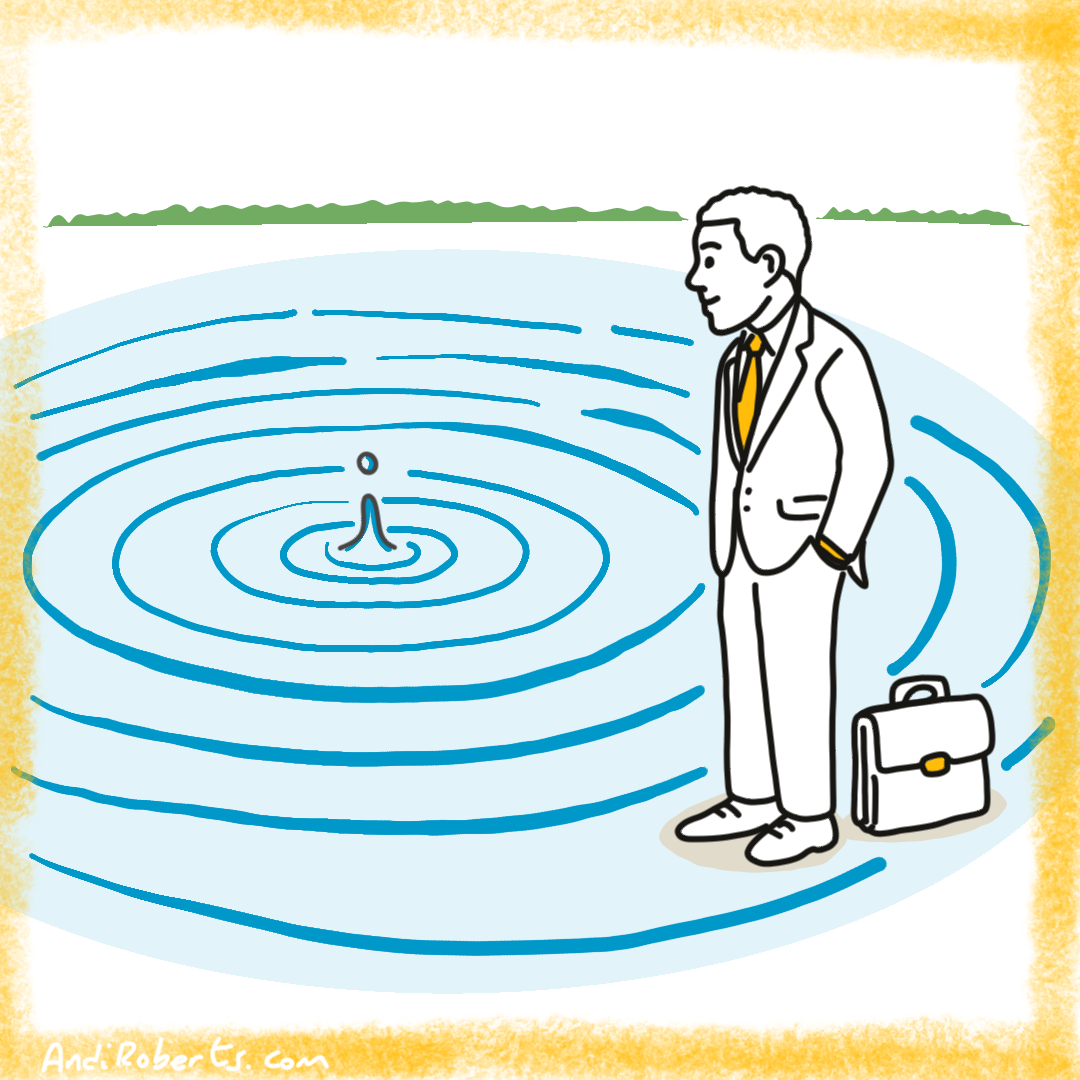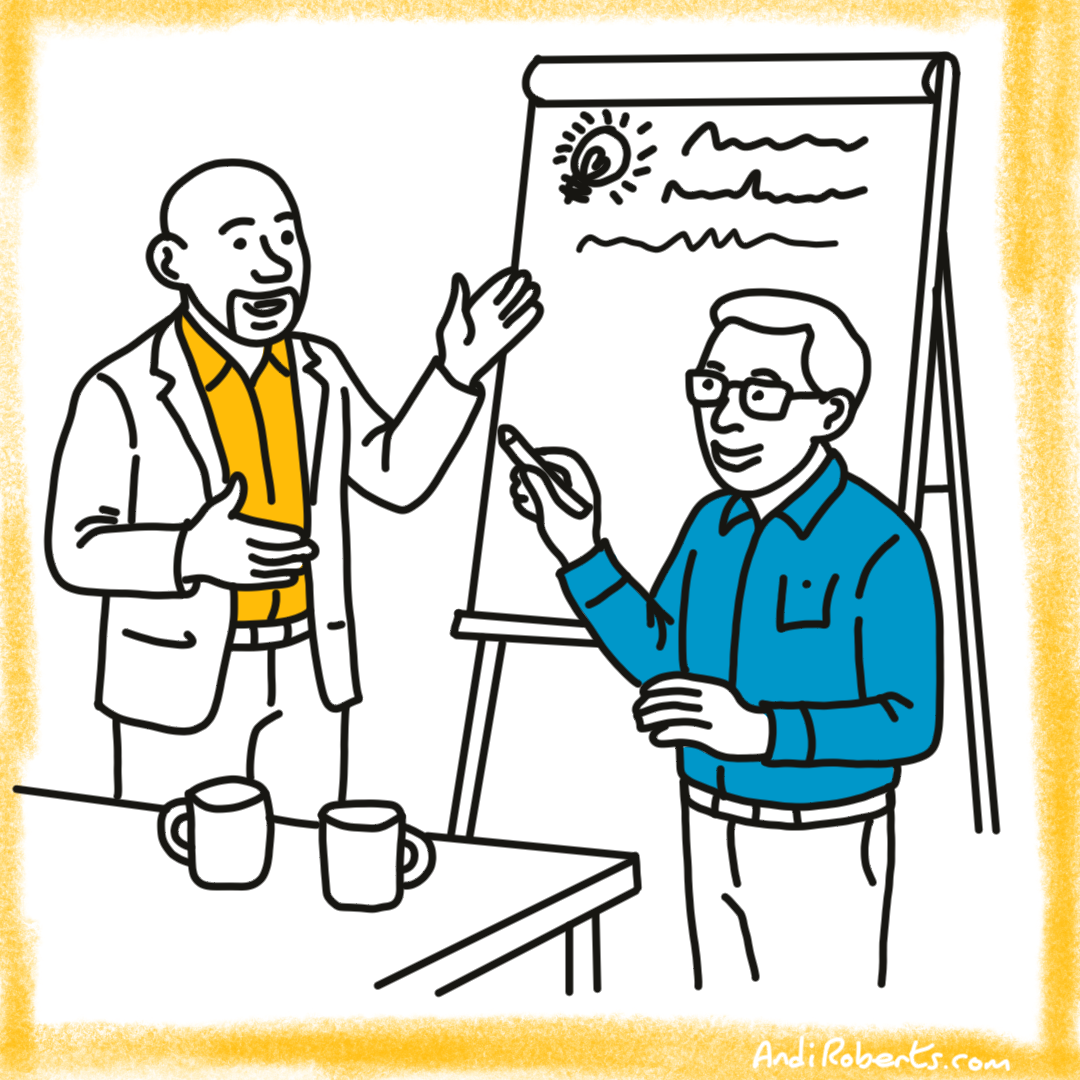Most leaders know they should give feedback, yet many avoid it because it feels uncomfortable or because past attempts have gone badly. Others give feedback but in a way that sparks defensiveness rather than learning. Over the last thirty years of leading and developing leaders, the simplest and most effective approach I have found is the AID model.
Action
Emphasis is on their actions, not on your interpretation of it. So you are feeding back what you observed or heard, not on their intentions, their personality or their character. Limit the number of actions you comment on a level they can handle – far better to give feedback on one key action that they can digest and build on to make a difference, than ten things which leaves the message diluted (and invariably leaves them demotivated). Because this is based on fact it is less likely to be challenged.
Action questions to consider:
- – What are you there to discuss?
- – What did you see?
- – What evidence/facts are there for this performance level?
Impact
This can include positive or negative impact on the end result, or on the process itself e.g. the amount of effort needed on their part to achieve the result, or the impact on others, etc. When giving praise it is so easy to say to someone ‘that was really good, well done’ without saying why it was good or what made the difference this time compared with previous occasions.
- What impact is this performance having on the team?
- – How does this performance effect other departments?
- – How is the customer (internal or external) impacted?
- – What evidence do you have for this?
Development or Desired Behaviour
Remember, the purpose of feedback is to enhance performance and motivate. So this last stage is important to determine what happens next e.g. develop to make it even better next time around, to correct a mistake or to perfect a process. Put the emphasis on what is missing rather than what is wrong – building on strengths or positives is far more likely to engender enthusiasm. Using open questions, ask the individual how they think things can be developed or built upon. This will help to gain buy in and you may be surprised by the options they suggest.
Development or desired questions to consider:
- – What needs to change going forward?
- – What does the goal look like?
- – Are actions SMART?
- – When will you meet again to confirm improvement or review results?
Moving from telling to asking
Where the AID model really comes alive is in how it is applied. You can use it in two very different ways:
1. By telling the person what you saw, what it meant, and what they need to do next.
2. By asking them to reflect, notice, and choose their own next step.
The first approach secures compliance, but it often creates dependency. The second builds ownership and self-assessment. Over time, the “ask” approach develops a team that takes responsibility for its own performance without waiting for instruction.
Action
Telling: “You interrupted three times in that meeting.”
Asking alternatives:
• “What do you remember about how you spoke in that meeting?”
• “When you think back, what actions stood out most to you?”
• “If you were replaying the meeting, what would you notice yourself doing?”
These questions help someone develop the habit of self-observation.
Impact
Telling: “That slowed the team down.”
Asking alternatives:
• “What impact do you think that had on the team’s energy?”
• “How do you imagine others might have experienced that?”
• “If you were in their position, how might it have felt?”
• “What evidence do you see for the impact this had on the outcome?”
The point is not to deny your own perspective but to create space for them to see consequences through their own eyes first.
Development (or Desired Behaviour)
Telling: “Next time, listen more carefully.”
Asking alternatives:
• “What needs to change going forward?”
• “What would a better outcome look like for you?”
• “What specific actions would you like to try next time?”
• “How will you know you are making progress?”
• “When should we meet again to review results?”
These questions keep responsibility with the person and make it more likely they will follow through.
Why this matters
The choice is simple but powerful. Telling is faster, but the effect is temporary. Asking takes longer in the moment, but over time it creates a team culture of reflection, accountability, and growth.
Practical ways to apply
• Choose one action to focus on, not ten.
• Share what you observed, then ask what they noticed.
• Offer your view of the impact, then invite theirs.
• Allow silence so they can reflect.
• Close with their chosen next step, not your instruction.
This small shift, from telling to asking, turns the AID model from a feedback tool into a leadership practice.
Telling vs Asking examples
Bad Tell: Manager to team member after a client presentation: “That was awful. You just rambled and lost the audience. You need to be better prepared next time.”
Why this is bad:
• It uses sweeping judgements like “awful” and “rambled,” which attack the person rather than focus on specific behaviour.
• It offers no clear evidence of what went wrong, so the feedback feels personal and unfair.
• It closes off discussion, which can leave the person defensive, embarrassed, or demotivated.
• The instruction “be better prepared” is vague, so the individual does not know what exactly to do differently.
Good Tell: Manager to team member after a client presentation: “In the presentation, you skipped over three of the main slides. The client then asked for more details on those areas, which extended the meeting and left them a little uncertain about our proposal. Next time, I would like you to slow down and give a fuller explanation on each of the slides so the client gets the clarity they need.”
Why this is better:
• It stays factual by highlighting observable behaviour: skipping three slides.
• It links behaviour to a tangible impact: the client asked for clarification and left uncertain.
• It provides a clear and specific development point: slow down and explain fully.
• It gives direction without attacking character or intentions, which makes it more likely to be accepted.
Bad Ask: Manager to team member after a client presentation: “So, how do you think that went?”
Why this is bad:
• The question is too broad and unfocused, so the team member may latch onto irrelevant points or gloss over the real issue.
• Without scaffolding, the person might say “It went fine,” which blocks the chance for deeper reflection.
• It risks becoming a superficial chat rather than structured developmental feedback.
Better Ask: Manager to team member after a client presentation: “Thinking back to the presentation, what did you notice about how much time you spent on each slide? How do you think the client might have experienced that pace? If you were presenting again tomorrow, what one adjustment would you try to make sure the client leaves with clarity?”
Why this is better:
• It focuses attention on a specific action: the pacing of slides.
• It encourages reflection on the impact from the client’s perspective.
• It prompts the individual to generate their own improvement idea rather than simply following instructions.
• It creates a forward-looking, developmental focus that builds ownership of the next step.
AID feedback model example from my world
I once worked with a sales manager who was very direct and prided himself on “just telling it straight.” When his team missed activity targets, he gave feedback like this: “You missed three calls today. That slows the pipeline. Tomorrow, I want those calls done before lunch.” The team responded by doing what he asked, but only in the short term. They became reliant on his constant reminders. He found himself micromanaging daily activity, chasing targets, and dealing with low morale. Compliance was achieved, but ownership was missing.
We worked together to shift his approach to an asking version of AID. After noticing missed calls, he started conversations with questions such as: “Looking at today’s activity, what do you notice about your call patterns? How might that affect your pipeline progress? What would you like to adjust tomorrow to get a better result?” At first, the team found the questions unusual, but within a few weeks something changed. They began to notice gaps themselves and would bring ideas to the table before he asked. They started comparing approaches with each other, learning collectively, and holding themselves accountable.
The manager spent less time policing and more time coaching. Performance improved, but even more importantly, the team culture shifted from dependency to responsibility.
Applying AID Feedback back to work
Feedback has the greatest impact when it becomes a regular part of how you lead, not a rare or uncomfortable event. The challenge is to move from good intentions to consistent practice.
Start by asking yourself three simple questions:
• Who on your team has done something worth recognising and reinforcing?
• Who could benefit from developmental feedback that helps them adjust or grow?
• Where are you hesitating to give feedback that, if offered constructively, could unlock progress?
Choose one or two people, not everyone at once. Feedback works best when it is focused and specific rather than spread too thin.
Before stepping into the conversation, pause for a quick self-check:
1. Am I focusing on facts or slipping into judgment? Keep to what you observed rather than speculating about motives or character.
2. Have I linked behaviour to a real impact? People change when they see why it matters.
3. Am I leaving space for the other person to generate the solution? Asking builds ownership in a way that telling cannot.
4. Do I know when I will follow up? Without follow-up, feedback risks being forgotten.
Now you are ready to prepare the conversation using the AID model:
1. Action – What specific behaviour did you observe? Be factual and concrete.
2. Impact – What was the consequence of that behaviour, either positive or negative, for results, the team, or customers?
3. Development or Desired Behaviour – What should continue, improve, or change going forward?
As you plan, decide whether you will lean more on telling (faster, but directive) or asking (slower, but ownership-building). Aim to include at least one “asking” question that prompts reflection and self-assessment.
Finally, set aside the time to have the conversation. Preparation is important, but feedback only has value when it is spoken, heard, and acted upon.
Your challenge: This week, commit to one AID conversation. Notice the difference it makes not only in performance but also in the quality of your dialogue and the responsibility your team members take for their own growth.
Let me know how it goes!
Beyond this post
- There is a range of resources and other models on feedback in the FEEDBACK HUB.
- Feedback, both giving and receiving are included in the 100+ capabilities shared on the Leadership Library page.
- If you are struggling with a person being defensive then THIS article from my Leadership Questions page may be of interest.






I do agree we need to clarify what is expected, if done results are much faster than you expect
Very useful feed back technique AID. Not in professional life is helpful at personal life. Always take pause Before giving feed back .
AID is a good model of giving feedback. It also helps in avoiding Personality clashes at work. Usually people avoid to give negative feedback as they don’t want to spoil their relationship, major focus on individual rather than on an issue, lack of data, facts and figures. Giving negative feedback in a positive way is an art on which people needs to be trained upon !!
Aid is a good coaching technique
Good feedback. All good to know
Good feedback all good to know
Very interesting but relative to my current role as Social Worker
I agree feedback is very important, it’s helps to correct which ever area we need to improve on.
Great feedback and coaching technique
great learning tool to get voluntees for the shop